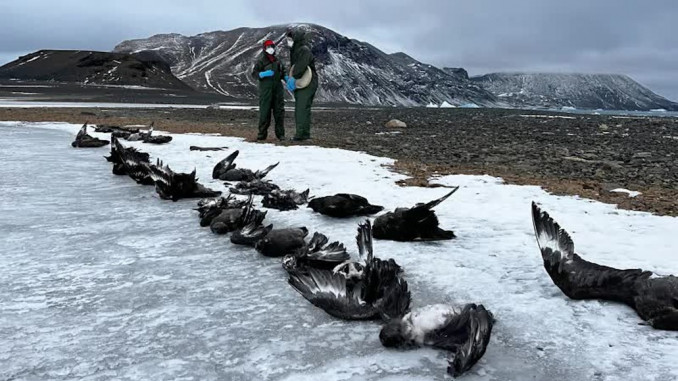
Since the start of July, five farmworkers in the United States have been infected with bird flu (H5N1). There has been a rising number of cases of this flu in people since the start of the year. Experts are concerned that, with the limited testing of poultry, cattle, and workers, H5N1 is more widespread than we know.
The bird flu has been around since 1996, when the first sign of it was detected in poultry in Guangdong, China. Since then, it has slowly spread to parts of Europe, Asia, Africa, and the U.S. In 2020, the virus had jumped from farmed poultry to wild birds. This flu has since spread rapidly around the world to every continent, including Antarctica, with the virus jumping over to over 40 species of mammals, including polar bears, cats, foxes, and cattle. This is especially concerning because humans are mammals and are genetically similar to other mammals, which makes the chance of spillover to humans even higher.
With the rapid spread of bird flu, millions of animals have died and with the close contact of dairy and poultry workers with sick animals, we are already seeing the dangerous risk to humans. So far, four dairy workers in the U.S. have gotten bird flu from an infected animal. The most recent cases was one worker from Texas and two from Michigan. In addition, 139 dairy cattle herds in nine states have been infected. And now, beef herds have been found to have bird flu.
Government officials and epidemiologists are asking factory farm corporations to begin testing their animals and workers consistently or to allow them to do it. But these corporations have been resistant. A sick flock would mean mass killings of their product and sick workers would have to take time off, both of which hurt the bosses’ endless need to generate profits.
But tests and mass killing don’t solve the problem. Factory farms and the agricultural industry generally are set up in ways that create the conditions for another pandemic. Farms are often built in areas on newly clear-cut land close to wild animals. Because of the close proximity to nature and wild animals, these farms attract animals like mice, birds, and bats, all of which are major disease carriers for mammals, including humans. With the clear-cutting of habitats to build these farms, many animals die out locally and the diseases living within them must find new hosts to survive. Viruses then infect animals like the cows, chickens, pigs, and humans that live nearby.
Factory farms purposely breed animals that are genetically similar for quality control and consistency in their product. When one animal in a farm gets sick, the disease is able to spread easily because of the genetic similarity of the hosts. No longer does the virus have to learn new tricks to spread. These farms are unsanitary; management overfills the spaces where animals have little to no room to move around, creating unneeded stress on the animals which weakens their immune systems. Often they live in their own and their neighbors’ excrement, creating another condition for disease to spread and mutate. These conditions are horrible for the animals, while also threatening humans.
The rush for profits for the owners of this industry requires that the animals be transported rapidly from farm to farm and to other processing stations without testing them. Farms are often hesitant to even vaccinate them. The rapid movement of livestock causes viruses that could stay isolated to easily spread further, giving each virus a new farm and hosts in which to grow and mutate. While new viruses and diseases rip through animals, the workers who work closely with them are put in a dangerous situation.
It’s not enough that workers are constantly being exposed to sick animals, but often farm workers are forced to work through sickness because of poor pay and fear of being fired. And the long, stressful hours on the job weaken their immune systems.
We are living in a time when bird flu can easily become the next pandemic. While some government officials and epidemiologists sound alarm bells, the best they can do is ask for more testing, mass killings of sick flocks, and vaccines. But this doesn’t solve the problem. The capitalist system must constantly expand to create more profits, which requires those companies in the agricultural industry to continue more deforestation of land, factory farming, and worker and animal abuse to turn the largest profit they can. As with climate change and the fossil fuel industry, the only way to truly address the issue of pandemics is for workers to organize to end this system which prioritizes profits over the health and well-being of workers, animals, and the planet.




